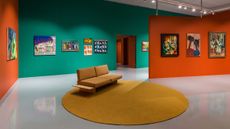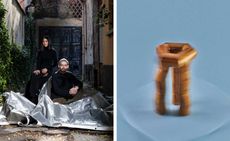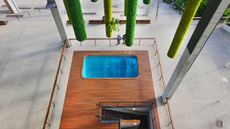Enter the mesmerising, AI-driven world of artist Refik Anadol
Refik Anadol’s masterly use of data sets and AI models allows him to create dazzling ‘living paintings’, now on display in MoMA’s Gund Lobby
- (opens in new tab)
- (opens in new tab)
- (opens in new tab)
- Sign up to our newsletter Newsletter

Surveying and synthesising more than 200 years of art from MoMA’s collection would be a daunting, and likely insurmountable task for most artists and researchers. Not so much for Refik Anadol, who recently unveiled a major installation in the museum’s ground-floor Gund Lobby, using AI art to generate endlessly changing forms and sounds across a 24ft x 24ft media wall, based on 320,000 visual inputs.
Unsupervised, as the installation is tagged, is a major career moment. ‘To show at MoMA is one of my biggest motivations in life,’ describes the Turkish-born, LA-based media artist. But numerically speaking, it is far from the most ambitious. In 2019, he’d used 100 million photographs of New York City, found publicly on social networks, to create a 30-minute cinematic piece. For a 2020 exhibition at Melbourne’s National Gallery of Victoria, Anadol deployed Google AI’s algorithms to process around 200 million nature and landscape images to create a 3D visual piece, Quantum Memories. The following year, his contribution to the Venice Architecture Biennale, Sense of Space, involved a collaboration with neuroscientist Taylor Kuhn to develop machine-learning algorithms based on 70 terabytes of MRI data, then used it to imagine the development of brain circuitry throughout the human lifespan. Not only is Anadol fascinated by what data sets tell us about the world, he also uses words like ‘beautiful’ and ‘inspiring’ to describe them.

Connectome, an AI data sculpture model for Sense of Space at the 17th International Architecture Exhibition, La Biennale di Venezia, 2021
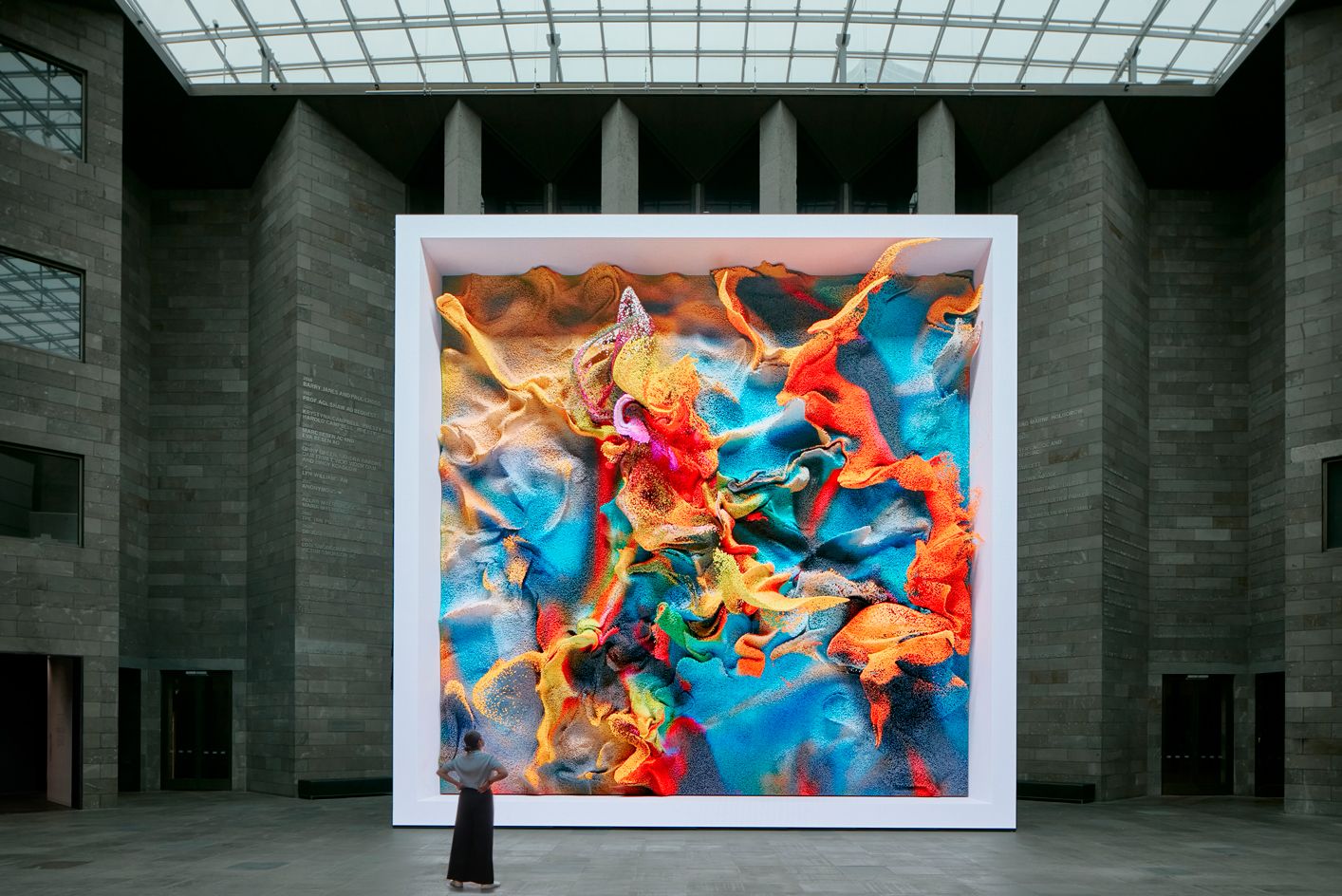
Installation view of Refik Anadol Quantum Memories 2020 on display in NGV Triennial 2020
‘In 2008, I coined the term “data painting” to express the idea that data can become a pigment that reflects imagination. This has driven my practice for 14 years,’ he tells me via Google Meet from his LA studio. Rather than conventional paintings, which involve fixing paint on canvas, he creates ‘living paintings’ which morph and evolve infinitely.
‘I became the first artist-in-residence at Google in 2016, which made me realise that a machine can learn, it can remember, and it can dream,’ Anadol continues. ‘Machines are becoming part of our society, and now they’re in our creative practice as well. It’s a whole new world.’
He explains that the MoMA installation has its origins in a 2021 online exhibition on the digital art platform Feral File, for which he’d trained a machine-learning model to interpret publicly available visuals and information around the museum’s collection to create a piece of generative art. The result was MoMA’s first NFT collaboration, ‘reimagining the trajectory of modern art, paying homage to its history and dreaming about its future’. ‘The idea is to stand on the shoulders of these incredibly pioneering artists [in the museum’s collection] to create something new,’ says Anadol.
Unsupervised takes the collaboration further, introducing a physical dimension as well as incorporating live inputs. Sensors within the Gund Lobby – which detect changes in light, numbers and movement of people, as well as the weather – will inform the visuals and sound, further reinforcing the idea of a living artwork. It is true that technology will be doing a lot of the heavy lifting, but Anadol is keen to emphasise the importance of human involvement. There is a lot of work that his 15-strong team (including computer graphic experts, architects, designers, musicians, data scientists, and AI researchers, who all together come from 11 countries) have put into creating a new AI model, and setting parameters so the AI can make decisions around colours, forms, patterns and speed. ‘It's not an autonomous piece, because I don't believe that’s what the future should be. I think human and machine collaborations are more relevant and positive for the future.’
The installation was co-curated by Michelle Kuo, curator of painting and sculpture at MoMA, and Paola Antonelli, the museum’s senior curator of architecture and design, and director of research and development. ‘With this commission, MoMA underscores its support of artists experimenting with new technologies as tools to expand their vocabulary, their impact, and their ability to help society understand and manage change,’ explains Antonelli.
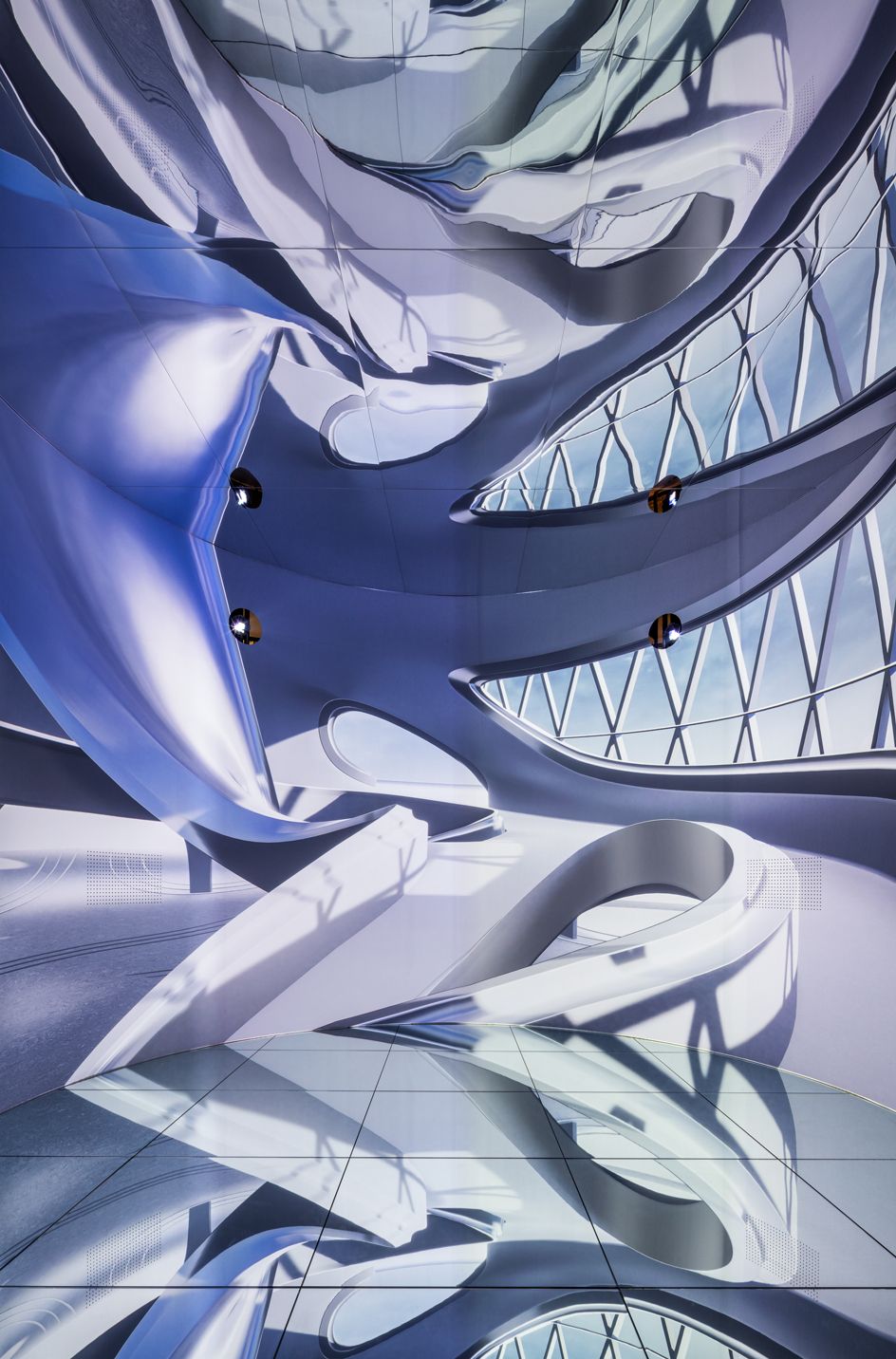
Architecting the Metaverse, by Refik Anadol Studio and Zaha Hadid Architects
Certainly, seeing Anadol’s digital animations come to life on the media screen in the Gund Lobby drives home the importance of physical experiences in our increasingly digital age. It puts Unsupervised in a long line of projects where Anadol has brought digital art to architecturally significant spaces, such as the façades of Frank Gehry’s Walt Disney Concert Hall in LA, Zaha Hadid’s Dongdaemun Design Plaza in Seoul, and Antoni Gaudí’s Casa Batlló in Barcelona. ‘I enjoy the moment when the physical and virtual connect. It’s always powerful to bring the two dimensions together,’ says the artist. His one-night-only projection mapping performance at Casa Batlló, in May 2022, had drawn 48,000 attendees. He spent the night walking among the audience, many of whom came up to him, moved to tears and asking for hugs. ‘That moment, when you touch someone’s mind and soul, and trigger beautiful emotions, is the ultimate moment of success,’ he reflects.
Up next for Anadol is a new take on the metaverse, called Dataland. As the project’s placeholder describes, it’s ‘the world’s first multi-sensory metaverse project [...] we will architect unprecedented spaces and invent cutting-edge poetic algorithms for new meditative experiences in the metaverse’. Collaborators include leading neuroscientists, architects, and AI pioneers, as well as tech titans such as Nvidia, Google and Epic Games. ‘I want to show that the metaverse is not just a virtual, cold space with heartless and soulless machines,’ he explains. ‘This is our attempt to find narratives in this new galaxy of imagination.’

Refik Anadol, Casa Batlló: Living Architecture, 2022
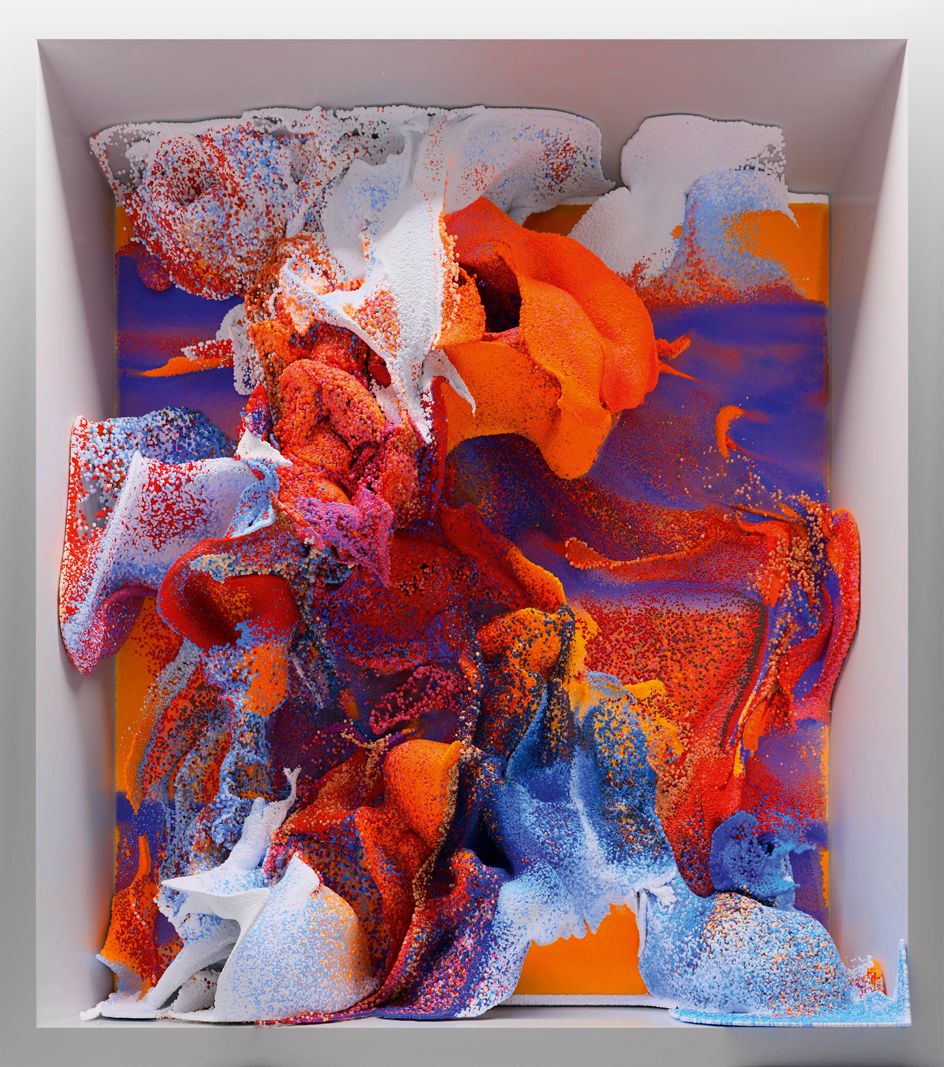
Refik Anadol, Sample data visualisations of Refik Anadol’s Unsupervised — Machine Hallucinations — MoMA — Fluid Dreams (2022)
‘Refik Anadol: Unsupervised’ is on view until 5 March 2023 in the Gund Lobby at MoMA, moma.org (opens in new tab); refikanadol.com (opens in new tab); dataland.art (opens in new tab)
Sample data visualisations of Refik Anadol’s Unsupervised — Machine Hallucinations —MoMA — Fluid Dreams (2022) appear on the limited-edition subscriber cover of January 2023 Wallpaper*, ‘The Future Issue’. Featuring real-time digital animation on LED screen and sound, the data sculpture was created using custom software and a generative algorithm with artificial intelligence.
A version of this story appears in the January 2023 issue of Wallpaper*, available now in print, on the Wallpaper* app on Apple iOS, and to subscribers of Apple News +. Subscribe to Wallpaper* today (opens in new tab)
TF has been editor of Wallpaper* since December 2020. He is responsible for our monthly print magazine, planning, commissioning, editing and writing long-lead content across all our content pillars. He also plays a leading role in multi-channel editorial franchises, such as our annual Design Awards, Guest Editor takeovers and Next Generation series. He aims to create world-class, visually-driven content while championing diversity, international representation and social impact. TF joined Wallpaper* as an intern in January 2013, and served as its commissioning editor from 2017-20, winning a 30 under 30 New Talent Award from the Professional Publishers’ Association. Born and raised in Hong Kong, he holds an undergraduate degree in history from Princeton University.
-
 Year in review: top 10 stories of 2022, as selected by Wallpaper’s Jonathan Bell
Year in review: top 10 stories of 2022, as selected by Wallpaper’s Jonathan BellTop 10 transport stories of 2022, from minimalist motor cars to next-generation campers: transport editor Jonathan Bell’s picks
By Jonathan Bell • Published
-
 ‘When We See Us’: Black figurative painting at Cape Town’s Zeitz MOCAA
‘When We See Us’: Black figurative painting at Cape Town’s Zeitz MOCAAA group show of Black figurative painting at the Zeitz Museum of Contemporary Art Africa, featuring 156 artists, explores the past and present of self-representation
By Sean O'Toole • Published
-
 Cara \ Davide is the Milanese design duo inventing a new design language on the cusp of contemporary and ancestral
Cara \ Davide is the Milanese design duo inventing a new design language on the cusp of contemporary and ancestralIn our Future Icons series, we explore ten next-generation designers who have made us sit up and take notice: here, we speak to Cara \ Davide about their design process and their cross-cultural inspirations
By Maria Cristina Didero • Published
-
 Art hub Casa Neptuna pops from the Uruguay landscape
Art hub Casa Neptuna pops from the Uruguay landscapeFundación Ama Amoedo announces 2023 art residencies hosted at Casa Neptuna, a space designed by Argentine artist Edgardo Giménez in José Ignacio, Uruguay
By Hannah Silver • Published
-
 Generative art: the creatives powering the AI art boom
Generative art: the creatives powering the AI art boomIt’s a new age for generative art, thanks to pixel-sorting, algorithm-sifting creatives. While the NFT market remains in flux, we delve into the rise of generative art, and the AI art boom
By Nick Compton • Published
-
 Daniel Gebhart de Koekkoek’s 2023 calendar is filled with flamboyant dog portraits
Daniel Gebhart de Koekkoek’s 2023 calendar is filled with flamboyant dog portraitsFor his 2023 calendar, photographer Daniel Gebhart de Koekkoek turns his lens on flamboyantly preened, catwalk-ready dogs, and we’re barking mad for it
By Sophie Gladstone • Published
-
 London art exhibitions: a guide for this week
London art exhibitions: a guide for this weekYour guide to the best London art exhibitions, and those around the UK, as chosen by the Wallpaper* arts desk
By Harriet Lloyd Smith • Last updated
-
 Monica Bonvicini ‘I do You’ review: bondage, mirrors and feminist takes on masculine architecture
Monica Bonvicini ‘I do You’ review: bondage, mirrors and feminist takes on masculine architectureEmily McDermott reviews Monica Bonvicini’s much-anticipated exhibition ‘I do You’ at Berlin’s Neue Nationalgalerie
By Emily McDermott • Published
-
 The best photography books for your coffee table
The best photography books for your coffee tableFlick through, mull over and deep-dive into the best photography books on the market, from our shelves to you this Christmas 2022
By Sophie Gladstone • Published
-
 Miami Art Week 2022: your guide to the 6 best shows in town
Miami Art Week 2022: your guide to the 6 best shows in townAs Miami Art Week 2022 enters full swing, explore our preview guide to the highlights, from Art Basel Miami Beach 2022 art fair to the best exhibitions and events
By Harriet Lloyd-Smith • Last updated
-
 Yayoi Kusama interview: ‘Painting helps me to keep away thoughts of death’
Yayoi Kusama interview: ‘Painting helps me to keep away thoughts of death’We interview legendary Japanese artist Yayoi Kusama, who discusses her major retrospective at M+, Hong Kong, the ‘power of art’, and her desire, at 93 years old, ‘to create ever more original works’
By Megan C Hills • Last updated

